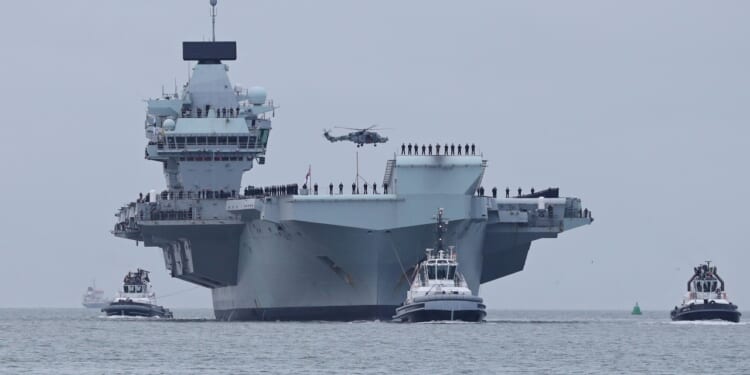The munition is designed to sink, damage, or destroy average-sized surface combatants, such as corvettes and patrol vessels.
The Royal Navy’s anti-ship helicopter fleet reached an important milestone after the Sea Venom missile achieved initial operating capability.
Royal Navy helicopters can now carry the Sea Venom anti-ship missile on active operations.
The Sea Venom
The Royal Navy achieved initial operating capability for the Sea Venom during Operation Highmast, a global deployment led by the HMS Prince of Wales aircraft carrier.
“The introduction of Sea Venom is a step-change in our combat power,” Commander James Woods, the commanding officer of 815 Naval Air Squadron, said in a press release. “It delivers a lethal combination of precision, reach, and flexibility that allows us to strike decisively against a wide spectrum of threats in the maritime, coastal, and land domains.”
MBDA is developing and manufacturing the anti-ship munition. The company intends to expand the platforms capable of launching the Sea Venom to warships.
“Most importantly, it gives us the ability to neutralise those threats at range. This is a transformational capability for the Fleet Air Arm, and ensures that we are ready to defend and protect NATO and Allied interests at home and abroad,” the Royal Navy officer added.
During the deployment, four AW159 Wildcats from the 815 Naval Air Squadron rotated among the HMS Prince of Wales, HMS Dauntless (a destroyer), and HNoMS Roald Amundsen (a Norwegian frigate), conducting testing of the new anti-ship munition. The testing was successful, and now the Sea Venom is part of the Royal Navy’s anti-ship missile arsenal.
“The integration of Sea Venom into a Ship’s Wildcat Flight at sea represents a significant enhancement to the Royal Navy’s lethality via its ability to strike targets at range,” Royal Navy commander Andrew Henderson, the commanding officer of the Wildcat Maritime Force, said. “It’s [sic] precision, range, and versatility ensures that our frontline crews are equipped to meet the challenges of a multi domain and complex environment.”
An Anti-Ship Missile
The Sea Venom is a helicopter-launched, over-the-horizon anti-ship missile. Developed and funded jointly by the British and French governments, the munition is designed to give surface warships additional anti-ship capabilities. The Royal Navy’s and the French Navy’s destroyers and frigates carry helicopters. Although these helicopters are often assigned anti-submarine warfare duties, equipping them with the Sea Venom munition increases their capabilities and those of the mothership.
A single AW159 Wildcat chopper can take up to four Sea Venom missiles, thus allowing for single hits against multiple targets or multiple hits against a single target. The munition weighs around 265 lbs, is 8 feet long, packs a 66-lb semi-armor piercing warhead (with impact or time-delay options), and has a 12-mile operational range.
Moreover, the Sea Venom features advanced uncooled imaging infrared seeker technology that allows the pilots to accurately select the intended target in a large naval battle scenario. It also has two-way data link capabilities that give the pilots full supervision of the engagement from the cockpit.
The munition is best designed to sink, damage, or destroy average-sized surface combatants, such as corvettes and patrol vessels. Nevertheless, a well-aimed salvo of multiple missiles could do serious damage to larger warships, such as cruisers, destroyers, frigates, and even aircraft carriers and tankers.
About the Author: Stavros Atlamazoglou
Stavros Atlamazoglou is a seasoned defense journalist specializing in special operations and a Hellenic Army veteran (national service with the 575th Marine Battalion and Army HQ). He holds a BA from the Johns Hopkins University and an MA from the Johns Hopkins’ School of Advanced International Studies (SAIS). His work has been featured in Business Insider, Sandboxx, and SOFREP.
Image: Kevin Shipp / Shutterstock.com


















